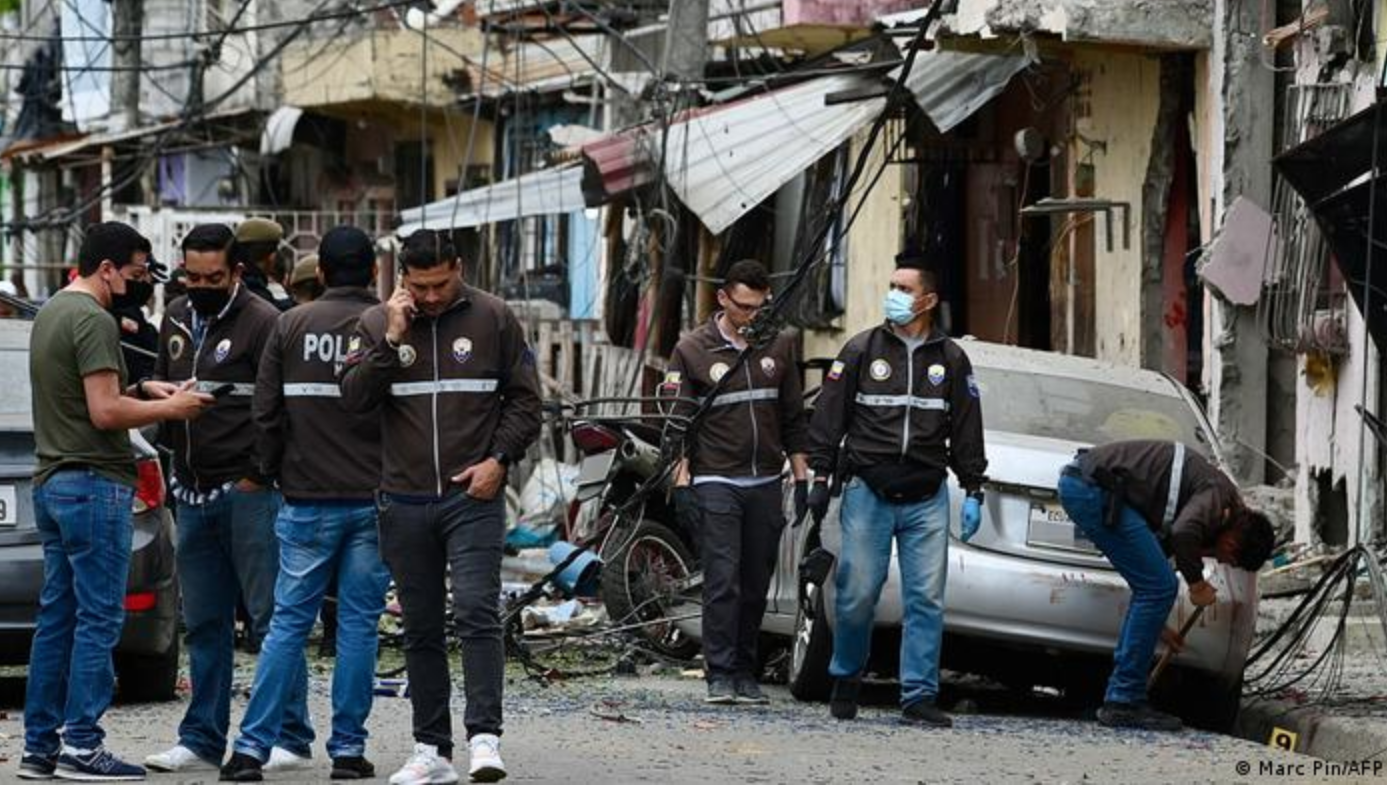
All of Ecuador’s tropical provinces (Esmeraldas, Guayas and Santo Domingo de los Tsáchilas) have been under a state of emergency for the past month. But the terror does not stop. Recently, there was a shooting in the Pascuales neighborhood of Guayaquil between members of the National Police and gang members of the Los Tiguerones. This gang signed a ceasefire and peace agreement with five other criminal organizations, all linked to the Jalisco Nueva Generación cartel, one of Mexico’s major cartels. This incident comes on top of the death of Leandro Norero, a member of another Ecuadorian criminal organization, the Ñetas. He was the link to the Mexican cartel and was a spokesman for the narcocriminal gangs with the government of Rafael Correa during the peace negotiations in 2009. What messages do these skirmishes send to Ecuador’s institutions?
Tamara Makarenko, a researcher at the Berdiansk State Pedagogical University in Ukraine, states in “The Crime-Terror Continuum: Tracing the Interplay between Transnational Organised Crime and Terrorism” that there is a “black hole” in the institutional framework of countries. It is a crack through which terrorists enter to install, within democracy, a criminal state.
Since the end of the Cold War and beyond, organized crime has increasingly become the main source of revenue for terrorist groups around the world. Makarenko asserts that this link occurs in the direct use of crime as a source of funding, but that there are other equally important sources of power accumulation in alliances for the provision of services between mafias.
The alliance mechanism is the first and foremost way to divide and specialize the labor force between organized crime and terrorism. Criminal groups form alliances with organizations, and terrorist groups seek alliances with criminal organizations. For example, the FARC, while mobilized until 2016, and today, a group of dissidents claims their inheritance and have woven an extensive network of regional contacts between major parties and criminal organizations outside Colombia, including Mexican drug dealer groups, often associated with Joaquin “El Chapo” Guzman.
Similar relationships have been established with Russian criminal gangs who took smuggling weapons into Colombia through Viktor Bout, now convicted in the United States for arms trafficking. As a result, relatively simple alliances based on the provision of specific services have evolved into more complex relationships between criminal groups and terrorists.
However, despite the existence of alliances between organized crime and terrorist groups, these groups are increasingly attempting to cut off these ties. As the 1990s progressed, it became evident that criminal and terrorist groups were seeking to modify their own structures and organizations to take on more political roles, rather than maintain their alliances.
According to Makarenko, criminal groups using terrorism as an operational tool and terrorist groups conducting criminal activities as an operational tool are the equation in the crime-terror chain. Although the use of terrorist tactics dates back to the history of organized crime, the involvement of terrorists in organized crime to profit from future operations was not a major problem until the early 1990s.
The post-Cold War period aggravated the situation and forced many criminals and terrorists to change their approach. As a consequence, criminal groups are increasingly involved in political activities, trying to manipulate the operating conditions of weaker and weaker states, so their goal is to keep countries weak, with corrupt police or judges and societies living in a constant sense of fear.
The mission of transnational narcoterrorist organizations is to infiltrate political parties and the media, recruit candidates, finance their campaigns, and once in power, negotiate peace agreements to dissolve the democratic structures of control.
At the beginning of the 21st century, more and more groups moved towards criminal and terrorist organizations at the same time. The Albanian mafia present on the South American west coast is a mixed group, as its activities show a close connection between the political and the criminal. The formula for the convergence of crime and politics is that Albanian criminal and terrorist groups appear to have interchangeable memberships and a recruitment base of operators, suppliers, and lawyers.
In this context, it is likely that the Albanian mafia has infiltrated all institutional structures in Ecuador. There are examples elsewhere with similar order of operation, for example, Abu Sayyaf, also known as Al Harakat al Islamia, which is a secessionist and jihadist movement based in the southern Philippines, or the Islamic Movement of Uzbekistan, a radical Islamist group formed to overthrow the presidential regime and establish an Islamic state under Islamic law; and the dissidents of the FARC, a far-left terrorist organization. All of these organizations are involved in drug trafficking, kidnapping for ransom, arms trafficking and activities related to criminal terrorism to influence politics in their countries.
As Makarenko explains, weak or failed states facilitate the convergence of transnational organized crime and terrorism and ultimately provide safe havens for the converging group. Many groups have evolved from ideologically or religiously motivated wars to wars of criminal interest, which are supported by terrorist tactics. In addition, politically motivated criminal organizations or commercial terrorist groups continue to exist, and their activities contribute to national or regional instability.
The result of this has been an increase in international organized crime and terrorist groups from international networks, in particular Al-Qaeda. Consequently, according to Makarenko, international organized crime and terrorism now directly threaten the security of the nation state, perhaps for the first time in history.
As a result, every drug shipment seized in Ecuador has a violent reaction on the Ecuadorian streets, which is perpetrated by the narcocriminal group involved.
*Translated from Spanish by Camille Henry


